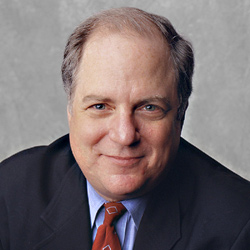Though you might expect the book to be a collection of his New York Times columns, Frank Rich charts a somewhat fresh path over familiar ground in The Greatest Story Ever Told: The Decline and Fall of Truth From 9/11 to Katrina (Penguin, $25.95). Be warned, however, that its signposts bear a numbing succession of names: Dubya and Dick, Condi and Rummy, Robert Novak and Judith Miller, Plame and Wilson, O’Neill and Suskind, and on and on. If you read Rich regularly, being a true-blue-bag Seattle Times subscriber, it may already seem like you’ve got those names tattooed on your fingers from flipping irately through so much ink on the subject. Honestly, how much more can be said about phantom WMDs, fictitious yellow-cake uranium in Niger, and the Iraqi informant so unreliable his handlers dubbed him—too late, of course—”Curveball”?
Rich shows some of the same fatigue, and Greatest Story amounts to a simple and half-persuasive argument presented in just over 200 pages. He doesn’t belabor his thesis, and the best part of the book may be its 80-page timeline of events, divided into two unlabeled columns that should’ve been simply branded “fact” and “fiction,” to which readers are invited to add damning details on his Web site, www.frankrich.com. (One wonders how long Bill O’Reilly will take to launch a Wikipedia-style guerrilla editing assault on both those categories.)
But here’s what former theater critic Rich sees as the essential plot to this off-off-Broadway production. America, understandably sore and wanting to hit someone after 9/11, was the perfect stooge, the perfect audience for Bush, who came to town like Robert Preston in The Music Man. We needed to believe in the righteousness of using force abroad, and we willingly followed the baton straight into Iraq. Only Rich devotes most of his book to the bandleader and the tune he played—not those of us, outside peacenik Seattle, who joined the parade.
In the show itself, the prevailing Republican narrative used to link 9/11 to Baghdad, Rich sees the ascendancy of what might be called Jerry Bruckheimer politics—the scripted spectaculars of bold, simple language and gestures (think: the carrier landing, smoking gun as nuclear cloud, and “dead or alive”). If Karl Rove is the Shakespeare of the genre, the Swift Boaters were the John Websters of the 2004 elections, easily eviscerating Kerry. Thus we had “an election year ruled by fiction” and “outright lies.”
BUT WHY DID we believe Bush’s grand story (to use the polite term)? Rich too briefly examines the underlying climate of O.J. and Gary Condit and Scott Peterson, where tabloid tales knock everything else off the airwaves and front pages. And—drum roll for the entrance of the villain, please—the media went along with it, desperate to sell dubious stories for ratings and readers. Of course, he blames the righties (Novak and Fox News, etc.), but the surprise of Greatest Story is how much venom he has for Bob Woodward, hero of Watergate and Rich’s generational peer, for trading White House access for largely uncritical best-sellerdom. (Ever the crafty Beltway warrior, however, Woodward may top Rich on the lists with his exclusive accounts of Oval Office dissent in his new State of Denial; Rich may get the big picture, but Woodward gets his phone calls returned.)
Yet I’m not sure it’s enough for Rich only to indict Woodward, Judy Miller, the 24/7 news cycle, and the Disney-Viacom-Murdoch media cartel for our being duped. He cites the insatiable ’90s rise of cable news and the Internet as a “new mediathon environment, [where] drama counted more than judicious journalism; clear-cut ‘evildoers’ and patriots were prized more than ambiguous characters who didn’t wear either black or white hats.” This blurring of truth into Stephen Colbert’s “truthiness” (Rich also loves Jon Stewart) works both ways—it’s not entirely the manufacturer’s fault that we consumers gobble up such deliciously plausible fictions.
In this way, though Greatest Story deserves its place on your sagging bookshelf of liberal outrage (file under Dubya), it misses the same key point as Fast Food Nation and even Bowling for Columbine. No matter how attractive the packaging and advertising, no matter how low the sticker price (taxes, Happy Meals, Iraq rebuilding costs, whatever), it’s still up to people to choose wisely at the drive-through window or voting booth. By making so much of the White House’s all-powerful and nefarious showmanship, he diminishes the importance (and intelligence) of the ticket buyer. Those who applauded the first two acts should now be made to feel their palms sting with shame. Before they read the Times stage review in the next morning’s paper.
Frank Rich Presented by Seattle Arts & Lectures at Benaroya Hall, 200 University St., 206-621-2230, www.lectures.org. $10–$25 ($42–$260 for full series). 7:30 p.m. Mon., Oct. 9.








